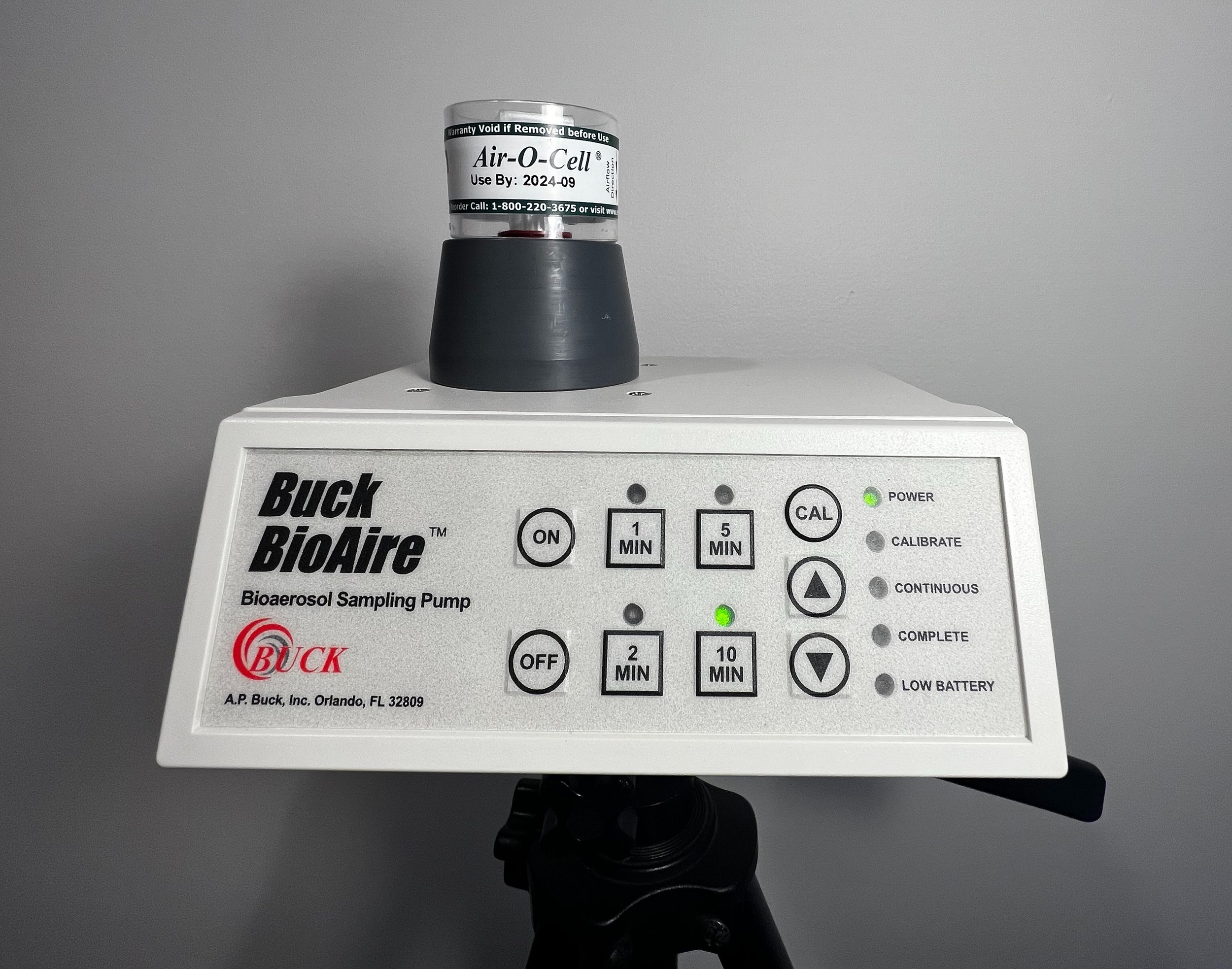Mold Inspections (Air and/or Direct Sample)
Mold in Air Inspection
Mold air samples are taken by using a pump that forces air through a collection device which catches mold spores. The sample is then sent off to a laboratory to be analyzed.
Taking air samples during a mold inspection is important for several reasons. Mold spores are not visible to the naked eye, and the types of mold present can often be determined by the laboratory analysis of the air samples. Having samples analyzed can also help provide evidence of the scope and severity of a mold problem, as well as aid in assessing human exposure to mold spores. If mold remediation is required, new samples are typically taken to help ensure that all mold has been successfully removed.
Mold Direct Sample (Tape Sample)
Tape sampling is the most common technique used to test surfaces for mold during a mold inspection. It provides the relative degree of contamination as well as the potential for airborne spore production. This method is non-invasive and will not damage materials or surfaces, when performed properly.



